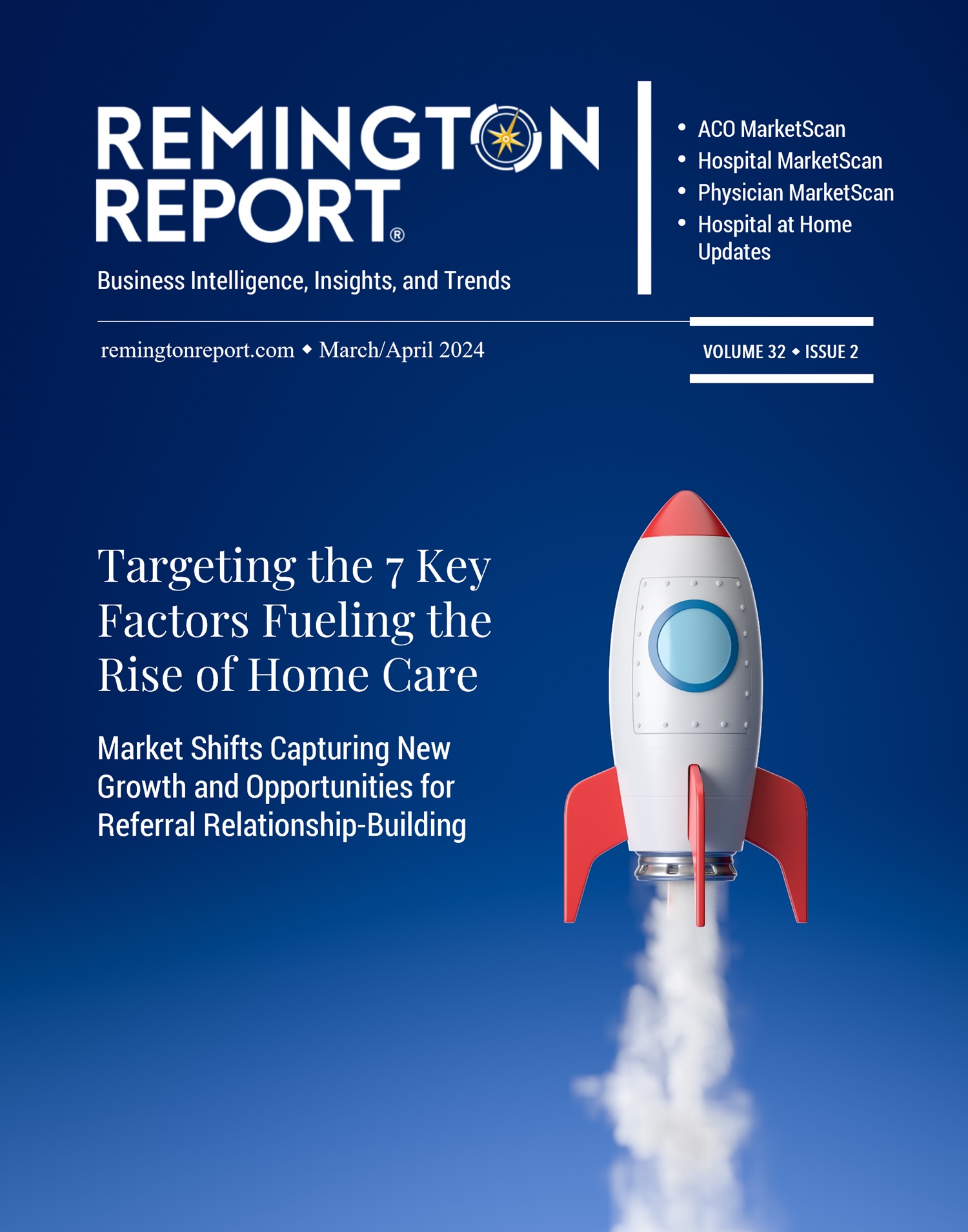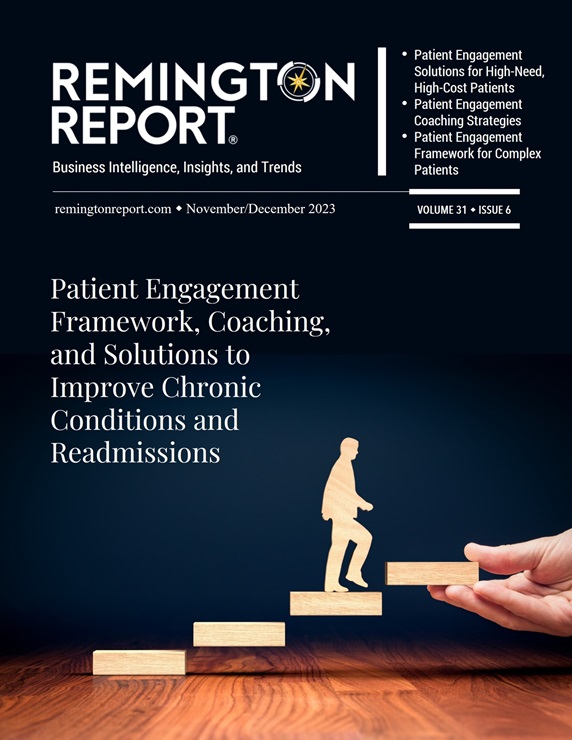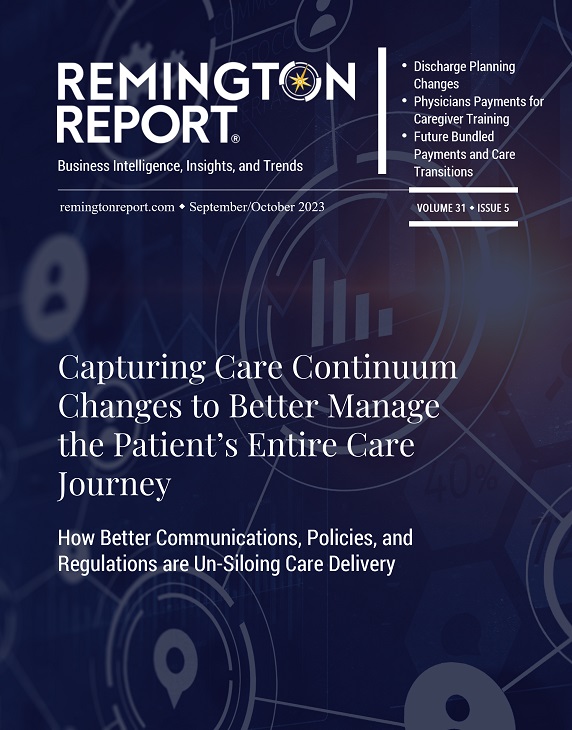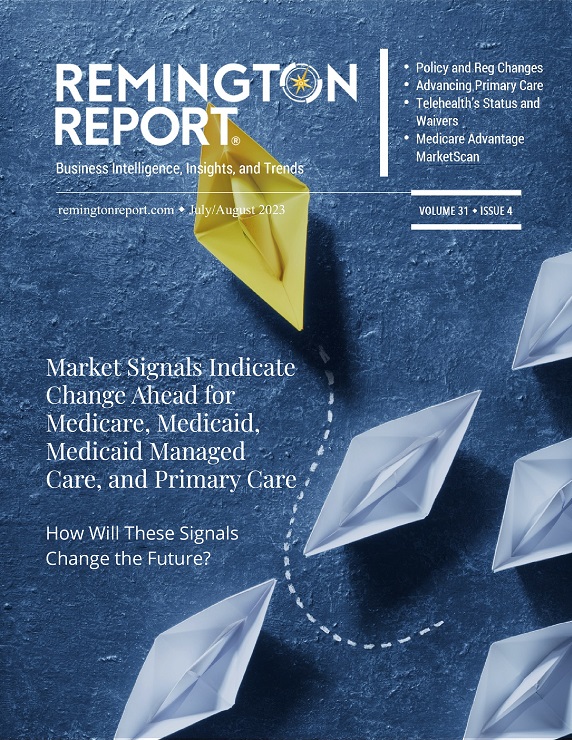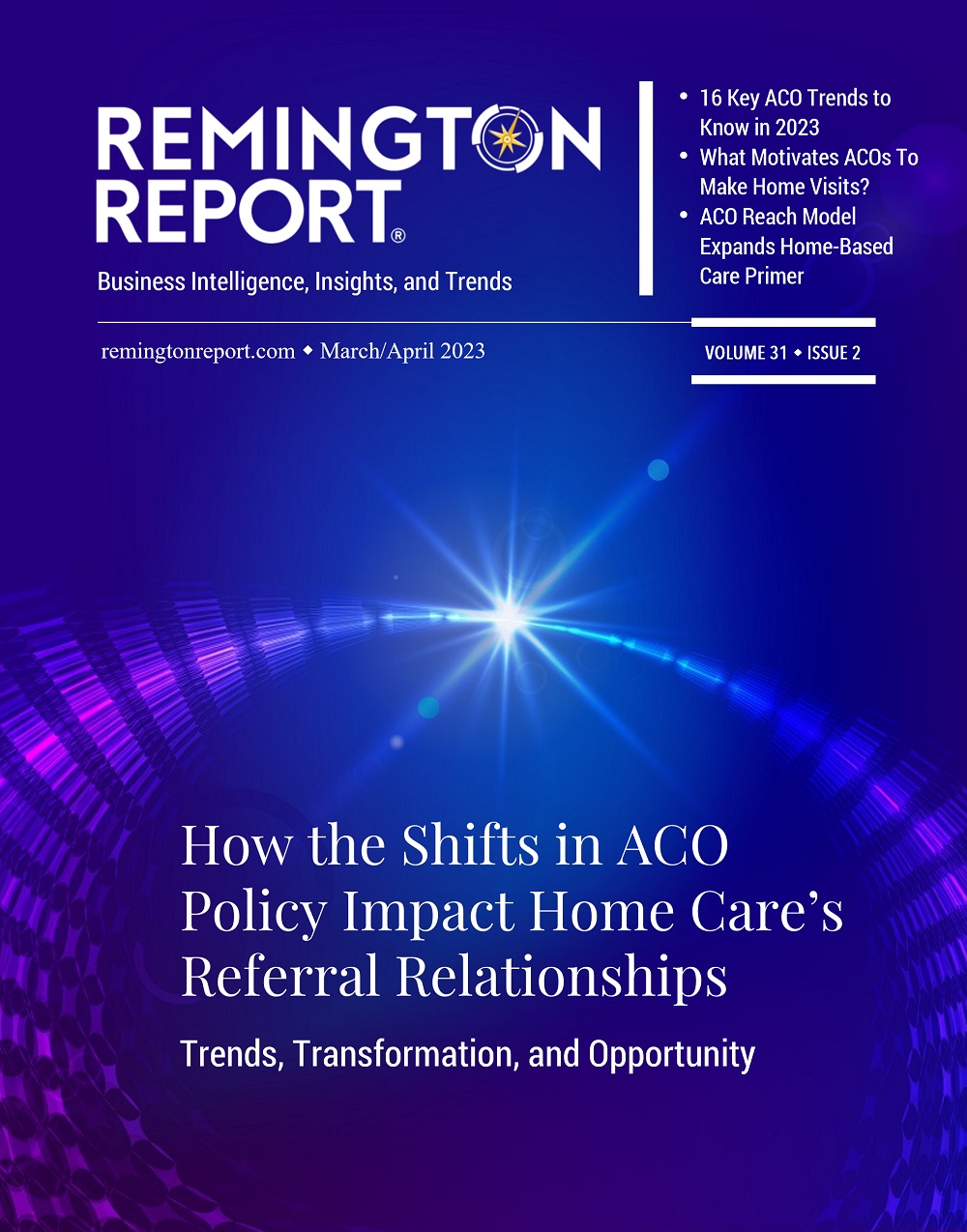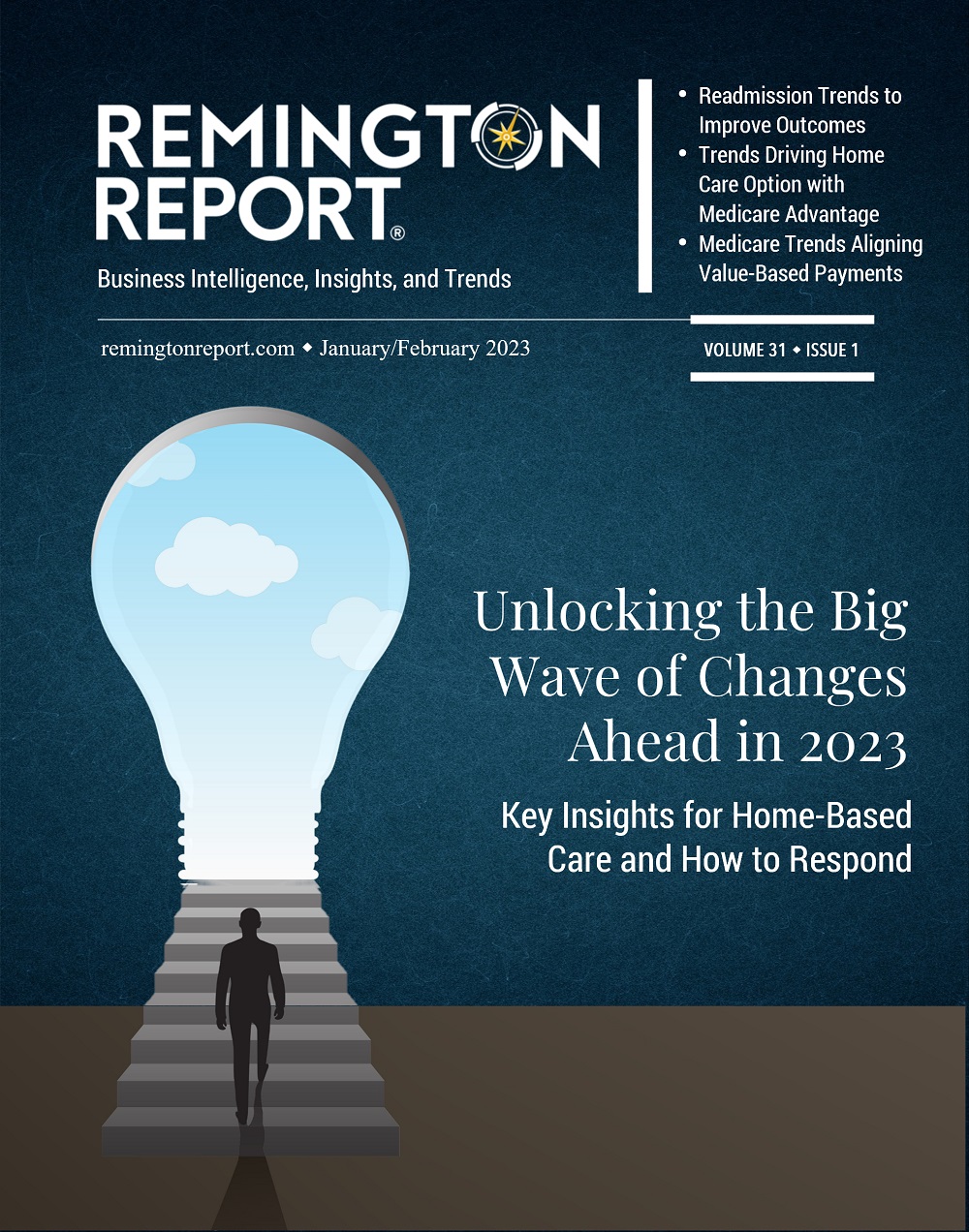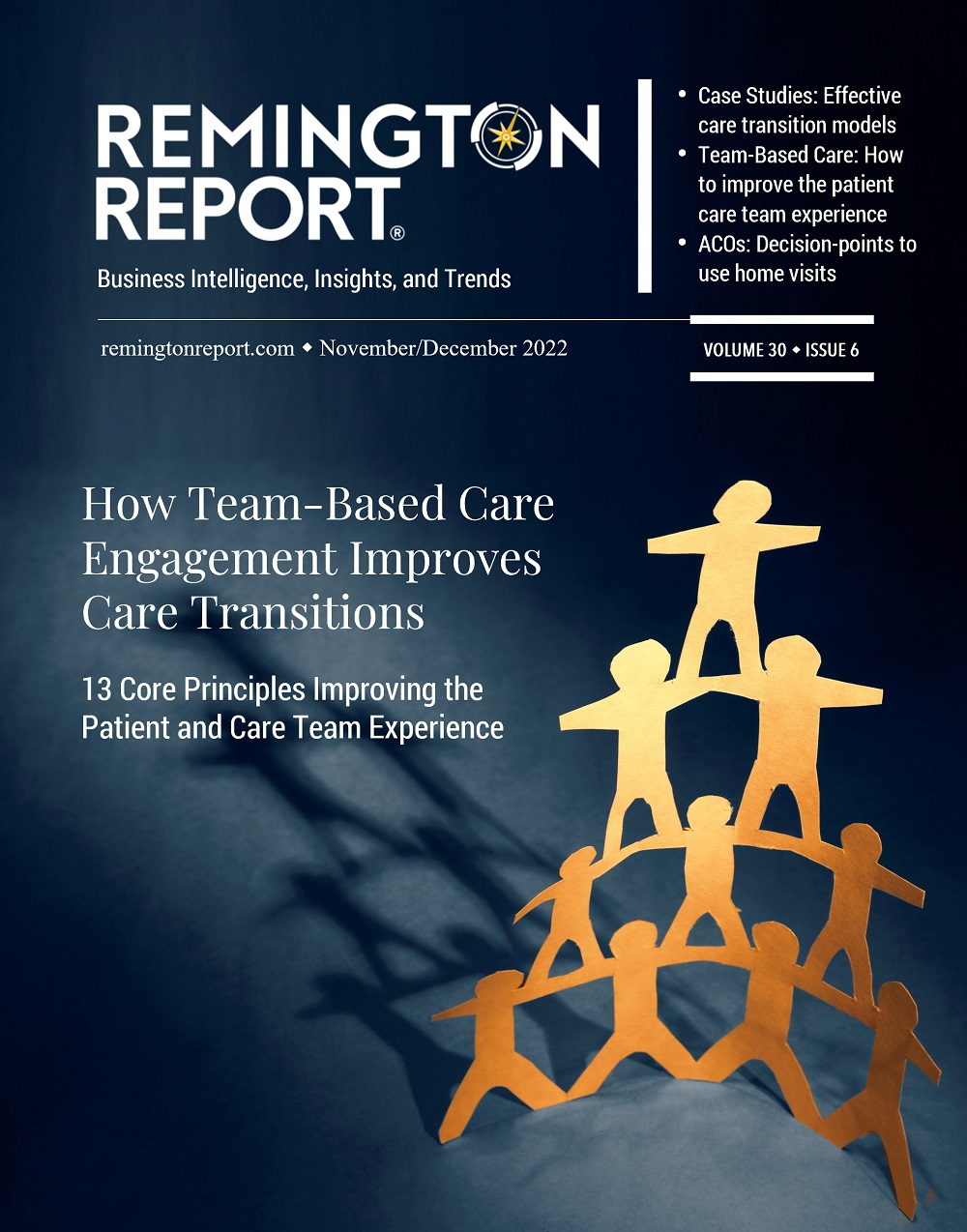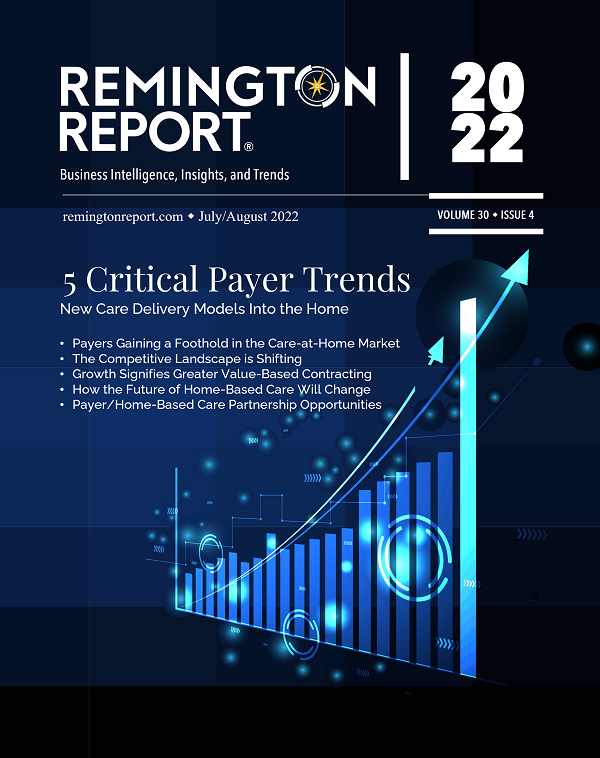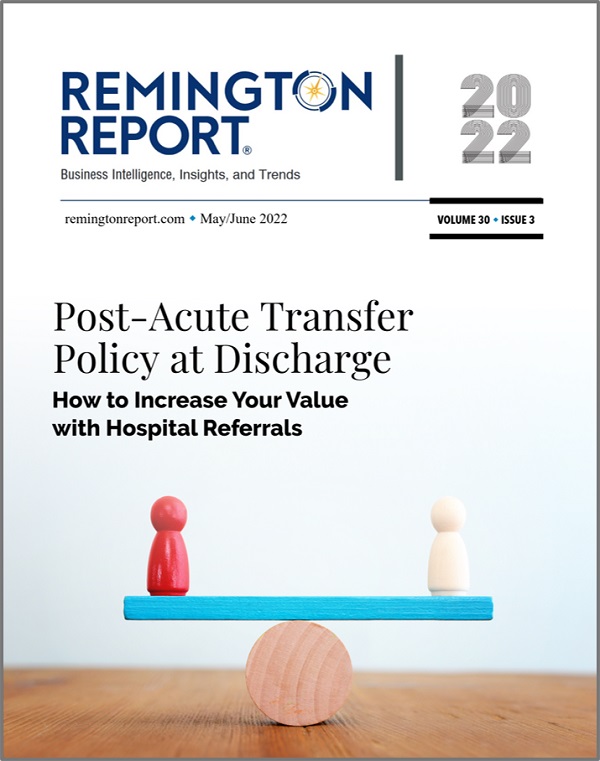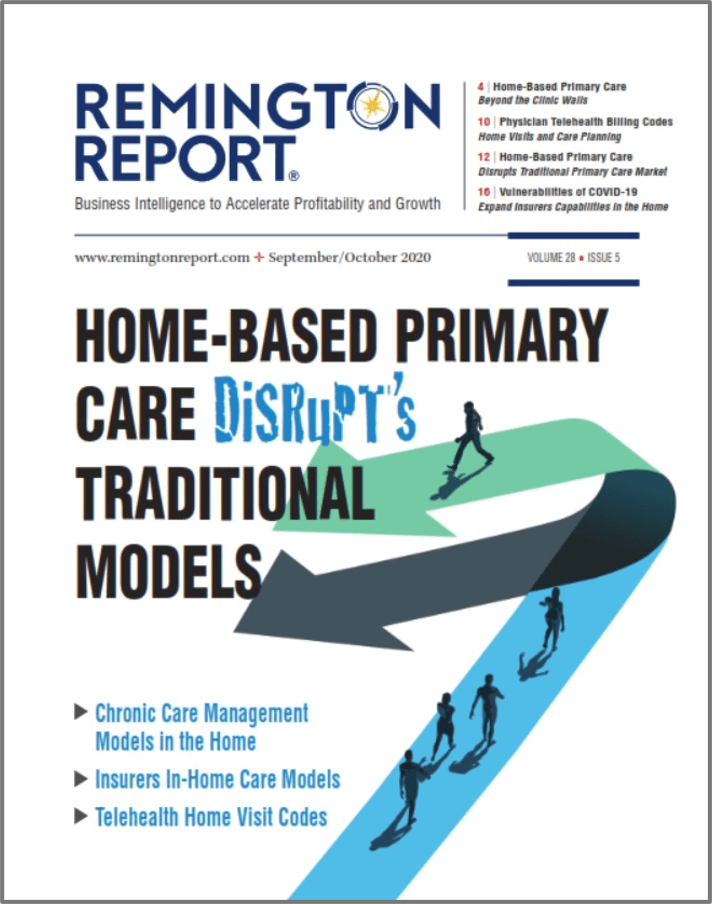JULY/AUGUST 2024 ISSUE
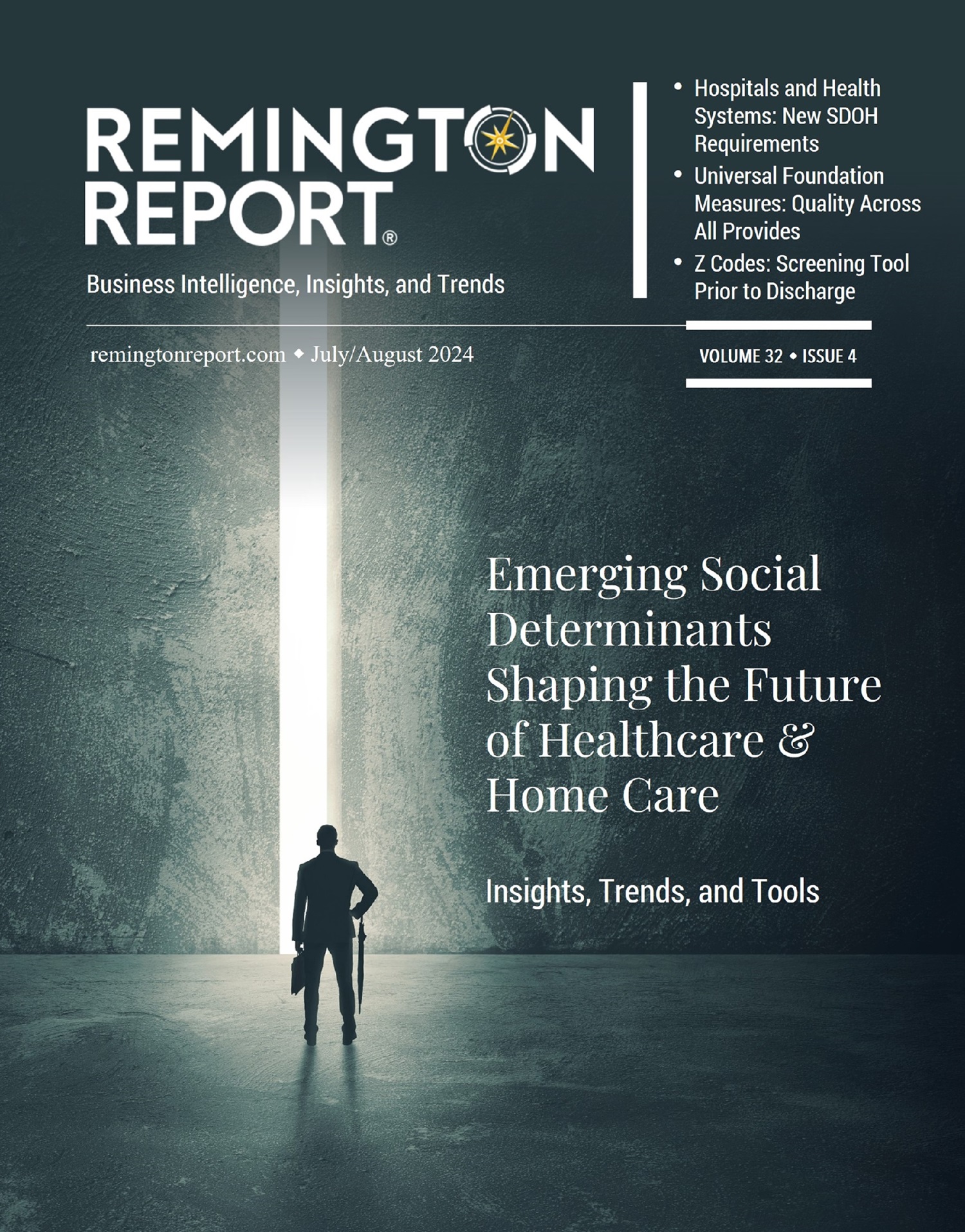
Unlocking Business Intelligence: A Deep Dive into Chronic Conditions
Interact, engage, and be a hyper-connected decision-maker! Get access to online resources for deeper insights; print or save to PDF on demand; engage to find interactive decision-making resources beyond each article; and take the magazine with you anywhere.
We dive deeper into subjects that can affect the future of your organization, providing actionable ideas on important topics affecting the rapidly changing healthcare and care-at-home industry.
JULY/AUGUST ARTICLES
Key insights for home-based care and how to respond.
Message From Lisa Remington
July/August 2024 Issue
FREE CONTENT In this issue of The Remington Report, we cover many aspects of social determinants of health. Get valuable insights, trends, and tools your organization can utilize to build referral partners, support patients and their families, and improve outcomes.
Universal Foundation Measures: The Focus on Care Coordination After Hospitalization, Readmissions, Patient Experience, and Screening for Social Drivers of Health
July/August 2024 Issue
SUBSCRIBER CONTENT Universal Foundation Measures is a framework designed to foster a collaborative approach to quality reporting and improvement across healthcare settings and payers. This initiative aims to promote unity among all healthcare providers, emphasizing the collective effort in shaping the future of quality measures.
8 Reasons Why Hospitals and Health Systems are Focused on Social Determinants of Health
July/August 2024 Issue
SUBSCRIBER CONTENT Hospitals are using required screening tools to identify the risk factors of social determinants. Results will expand referral relationships to improve meaningful collaboration between healthcare providers and community-based organizations. Get to know the key reasons this is important to your organization.
Social Determinants of Health Z Codes: Important Codes To Know Before Patient’s Discharge
July/August 2024 Issue
SUBSCRIBER CONTENT Obtain Z codes prior to a patient's discharge to gather crucial information that can assist your organization in identifying non-medical conditions and social and economic factors. We will guide you on how to locate them.
What are the Top Preferences of Consumers to Improve Social Determinants of Health?
July/August 2024 Issue
SUBSCRIBER CONTENT A groundbreaking consumer survey has unveiled key insights into how your organizations can enhance their social determinants of health. Your understanding of these top preferences can revolutionize your approach, underscoring the importance of your role in this process.
Medicaid MCOs: 4 Key Trends to Reduce Social Determinants of Health and Increase Care Coordination
July/August 2024 Issue
SUBSCRIBER CONTENT Medicaid MCOs, as key players in the healthcare system, are increasingly focused on social determinants of health. They are implementing strategies to reduce these determinants and improve patient outcomes. Get the current trends and learn what’s ahead, so you can better collaborate with these organizations and enhance patient outcomes.
Teaching Caregivers How to Help Patients Heal
July/August 2024 Issue
SUBSCRIBER CONTENT Noora Health’s Health Companion Program enhances family and caregiver knowledge, boosts professional development for aides, and gives your organization a competitive edge. Discover the key insights of this innovative program.








